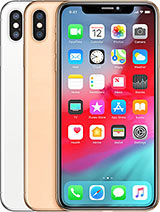Flashback: the phones that weren’t, part 2 - letting people design a phone

Henry Ford once said “If I had asked people what they wanted, they would have said faster horses”. The authenticity of the quote isn’t 100% confirmed, but the point is clear – people can’t always come up with the best solutions to their problems.
But there is another popular quote – “Vox Populi, Vox Dei”, which translates to “the voice of the people is the voice of God”. ZTE liked this one better and in 2016 it announced the start of Project CSX.
The goal was simple, form a new online “Z-Community” who will help design a smartphone by suggesting cool features and later voting on them. The rules were perfectly reasonable:
- It has to be a mobile product (note: not necessarily a smartphone)
- Technologically, it needs to be realistic for 2017
- Final product must be affordable for the general population
Then ZTE let people’s imagination fly. Step one was collecting ideas – around 400 ideas were submitted, of which 100 were disqualified because they didn’t fit at all.
Step two was the voting phase, which started at IFA 2016. The top 3 suggestions would proceed to the next stage – forming “hacking teams” to build prototypes. The winning prototype was to be unveiled CES.
January 2017 came around and Project CSX officially entered the next stage – the phone was officially named “Hawkeye” and a launched a Kickstarter campaign that looked to raise $500,000 within 44 days so that production can begin. Fans could back the campaign for $200 and get one of the phones that they helped design, shipping was planned for September.

Well, what was the killer feature of ZTE Hawkeye? Eye tracking. The phone was to have a high resolution front-facing camera, which would track the user’s gaze and trigger context-sensitive actions. Here’s the official promo video:
The gist of it is that you could scroll web pages without touching the phone. This also worked in the gallery, allowing you to “swipe” through photos with your eyes. A few other things were hinted at like controlling Google Maps with your gaze.
Some of you may be thinking “didn’t the Galaxy S4 from 2013 do that?” It did, it was called Smart Scroll. That expected you to tilt your head instead of just looking at the edge of the screen, but it was more or less the same thing.



The Galaxy S4 introduced Smart Scroll and related features
The S4 had other Smart features in its toolbox. Smart Pause could automatically pause a video when you looked away. Smart Stay (first launched on the S III) would prevent the screen from locking while you were looking at the screen. Smart Rotate used the relative orientation of your face rather than the accelerometer to rotate the screen. And this was on top of all the hand-waving features.
There is something about this idea that sounds so cool during the design stage, but then users completely ignore when given access to it. The Amazon Fire Phone had four cameras on the front for accurate face tracking and could render convincing 3D effects. Well, we all know how that went. Google crammed a radar into the Pixel 4 phones (Project Soli) because it thought that fancy hands-free gestures would be a hit too (spoiler: they weren’t).
There was one more thing, the phone would have a case that could stick to smooth surfaces. This would allow you to stick Hawkeye to the wall and use the eye tracking feature to control it.

So, what happened with Hawkeye? By the end of January it was clear that things weren’t going well. The campaign drew in only $36,245, less than 10% of the goal. People just weren’t impressed with the specs of the device.
The company tried to regroup. It said that it will either upgrade the specs or take down the Kickstarter campaign entirely and replace it with a better device. Better how? ZTE kept the spirit of the project alive and asked people to vote on what to do:
- Swap the Qualcomm 625 for the 835?
- Swap the 3000 mAh Battery for a 3500 mAh?
- The OS would be Stock Android with added software for eye tracking?
The company was also open to other suggestions. A few days after this poll went up, just under 100 people had voted – that doesn’t sound much but it was about half the number of backers.
Ultimately, there was no satisfactory plan and the company made the decision to cancel the campaign in February 2017. The project itself wasn’t over, the company wanted to continue exploring these ideas, but Hawkeye would never see the light of day.

ZTE made a mistake of picking relatively low-end hardware for Hawkeye and it admitted as much. But considering that the offer to upgrade to a much more powerful chipset didn’t entice people either shows that maybe the whole eye-tracking idea wasn’t viable.
And with the benefit of hindsight we know that multiple similar ideas have failed to gain traction. For example, the Galaxy S23 doesn’t have Smart Scroll, that was abandoned generations ago. Project CSX was a cool idea and hats off to ZTE who was actually willing to listen to fans. Unfortunately, some things sound much cooler than they are and controlling your phone with eye tracking is one of those things.
Related
Reader comments
- kevvv
- 18 May 2023
- txE
Well actually I'm also not a type of people who changed their phone every year. I just switched to Samsung after using Vivo since 2018. I just don't like it when people just prefer "this" brand just because "that" brand ...
- AlienKiss
- 17 May 2023
- 0Ca
You should speak for yourself, not for others. Just because you change your phone every year, it doesn't mean everyone else does it too. Since 2010 when Android was released until now, I've used 4 phones: - 2010-2013 - HTC Desire Bravo ...
- kevvv
- 16 May 2023
- txE
Speaks about support, what's the point of putting 4 OS Upgrades or more on a flagship if people will just change their phone every 1-2 years? Also too bad some people don't even want to update their phone, just because their phone "sti...










 Samsung
Samsung Infinix
Infinix Apple
Apple Apple
Apple Xiaomi
Xiaomi


